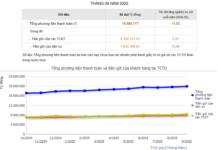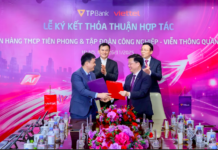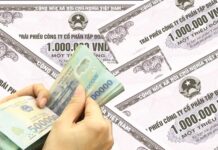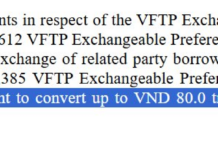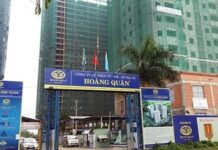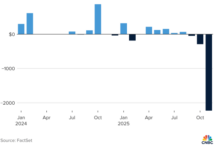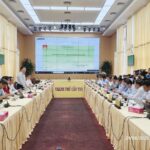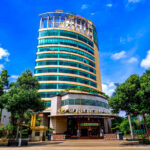
Three decades ago, on July 28, 1995, Vietnam officially joined ASEAN at the 28th ASEAN Foreign Ministers’ Meeting in Brunei. According to Ms. Truong Ly Hoang Phi – Chairman and CEO of IBP, Vice Chairman of Ho Chi Minh City Young Businesspeople Association, and Head of InnoEx 2025 Organizing Committee – this was a strategic and pivotal decision, choosing international integration over isolation.
“A new chapter in our economic history was written because of this choice,” emphasized Ms. Phi. The figures from the past three decades clearly demonstrate this: GDP has grown from over $20 billion to nearly $500 billion; per capita income has increased from less than $300 to almost $5,000; and import-export turnover has soared from a few billion dollars to over $730 billion. All of these achievements are a testament to how a bold decision to embrace integration transformed the country’s economic destiny.
Three decades later, according to Ms. Phi, Vietnam is once again faced with a new strategic choice. If 1995 was about opening up to the world, then 2025 is about stepping into the digital world. In the global context, data has become a strategic asset, artificial intelligence (AI) is the engine of growth, and innovation is the survival standard. Whereas Vietnam’s strengths used to lie in labor, resources, and market size, the keys to success now are knowledge, technology, and innovative capacity.
Ms. Phi explains that innovation is not just a slogan but a multi-level journey. Businesses can start with small improvements to optimize processes (incremental innovation), upgrade products to maintain their advantage (sustaining innovation), go further with breakthrough models that change the “rules of the game” (disruptive innovation), and eventually reach the pinnacle of radical innovation, where entirely new technologies are born and market landscapes are redrawn.
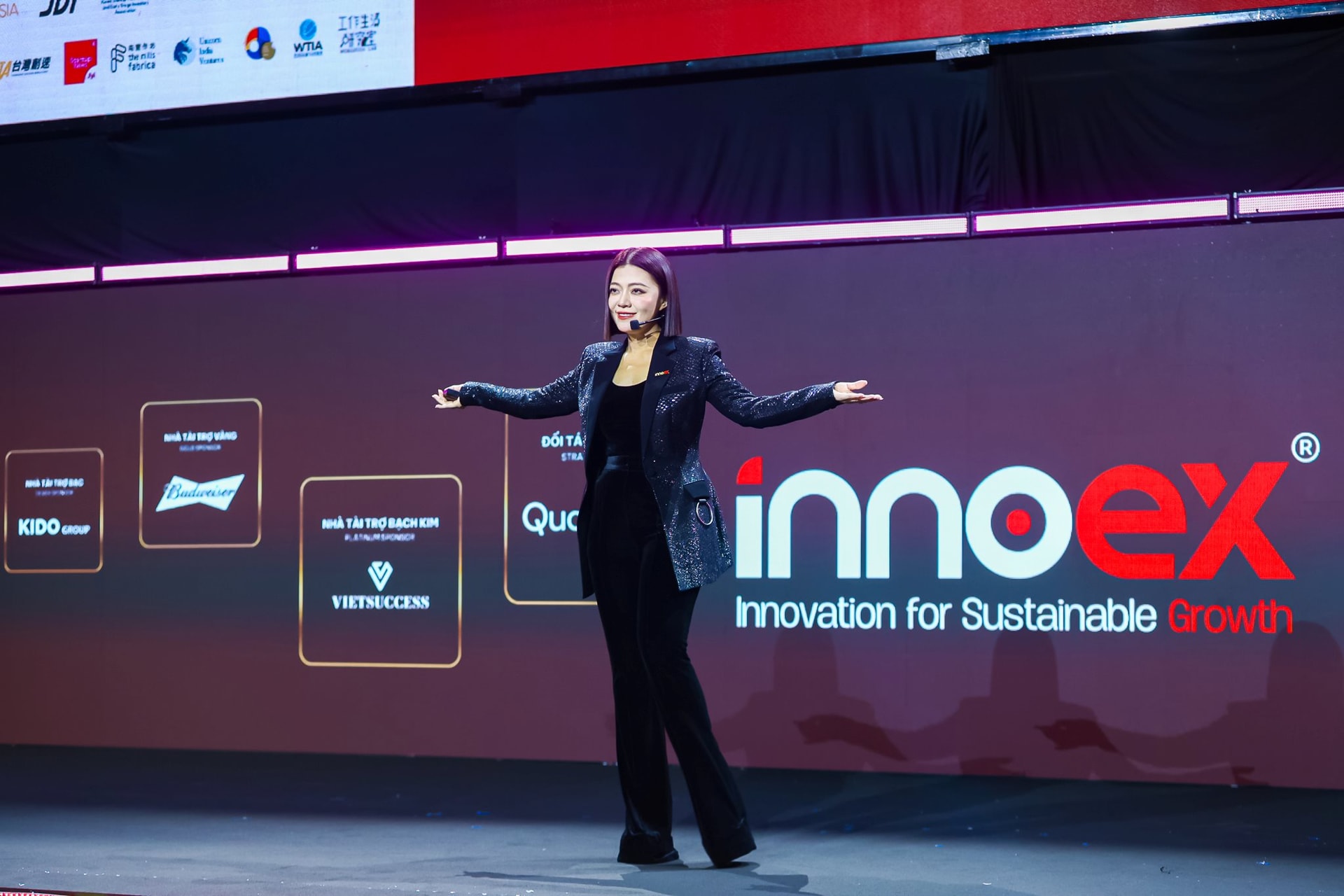
According to Ms. Truong Ly Hoang Phi, innovation is a multi-level journey for businesses.
“Currently, Vietnamese businesses are familiar with incremental and sustaining innovation, while the world has already progressed to disruptive and radical innovation. If we don’t upgrade our innovation journey, we will forever remain at the foot of the mountain, merely watching others’ progress,” warned Ms. Phi.
According to her, success in the digital integration journey does not stem from existing advantages but from the ability to turn those advantages into competitive capabilities—in other words, harmoniously combining “circumstances” and “strength.” Vietnam is blessed with favorable timing, as the digital economy in ASEAN is growing at over 20% per year. Geographically, the country has become a supply chain hub and boasts a domestic market of over 100 million people. Additionally, there is a young workforce and over a million IT engineers, creating a positive social environment for innovation.
However, spending on R&D is only about 0.4% of GDP, significantly lower than leading countries. A bright spot is the policy framework, which includes four important resolutions (57, 59, 66, and 68) that promote innovation and private economic development, creating a “policy force” for businesses to confidently invest for the long term.
But to turn “circumstances” into “strength,” Ms. Phi believes that Vietnam needs to overcome three major groups of obstacles.
Firstly, there’s the issue of innovative human resources. Most small and medium-sized enterprises—which make up over 90% of businesses—lack the mindset and management methods for innovation. The absence of a “human resource tower,” ranging from leaders with vision to technology architects capable of guiding the way, makes it challenging for the innovation journey to go far.
Secondly, there’s the culture and capacity for implementation. Many businesses still have a “fear of failure” mentality, whereas innovation is inherently linked to experimentation and risk. Without establishing a “try-fail-learn” mechanism, innovation will be limited to short-term improvements.
Thirdly, there are institutional barriers. Although there are resolutions paving the way, the concretization of policies and procedures is still slow. The newly established sandboxes are just starting, and a more robust foundation is needed to create a “breakthrough” for businesses to boldly invest in new technologies.

InnoEx 2025 is expected to be a platform for action to directly address these three major groups of obstacles in the digital integration journey.
This is also the reason for the birth of InnoEx 2025, according to Ms. Phi, as a platform for action to directly address these three major groups of obstacles. The initiatives of InnoEx are designed to internationalize R&D, bringing global knowledge to Vietnam, while simultaneously accelerating innovation within enterprises through the Innovation Fast Track or the On-Demand Innovation Laboratory. Parallel to this are programs for human resource and ecosystem development, such as training 1,000 CEOs in 5 years, commercializing institute and university technologies, and building the InnoEx advisor community.
“InnoEx is not a place for observation but for action. Not individual action, but collective action,” Ms. Phi emphasized.
According to her, Vietnamese businesses need to regard innovation as their core competitive advantage. For startups, this is an opportunity to leverage the platform’s connections and scale up quickly in the international market. For international partners, Vietnam is not just a gateway to ASEAN but also a destination for co-creating value with Vietnamese businesses.
Thirty years ago, the choice to join ASEAN changed the country’s economic destiny. In the next thirty years, the choice of Innovation will determine Vietnam’s position—and InnoEx is the platform for the business community to move forward together, conquering new heights.
The Silver Investment Boom in Vietnam
While gold prices continue to soar to unprecedented heights, making it a challenging venture, the silver market is witnessing a surge in popularity. Many individual investors have reportedly reaped profits of over 20% in just a few months by investing in silver. With its affordable price point and high liquidity, silver is emerging as a fresh alternative for savvy investors.
Resolution 68: Transforming Perceptions and Mindsets About the Private Sector
“Professor Dang Viet Anh highlights the ambitious goals set by Resolution 68, which envisions a significant boost in private enterprises in Vietnam by 2030. The resolution aims for a substantial increase, targeting at least 1 million additional private businesses in the country by the end of the decade.”
The Power Trio: BSH, VIG & TAPTAP’s Strategic Alliance for Sustainable Growth
As insurance needs become increasingly intertwined with life experiences, consumers demand swift and transparent solutions. The collaboration between BSH Insurance, VI Group, and TAPTAP does not merely bring insurance closer to digital-savvy consumers but also forges a multifaceted ecosystem where both customers and businesses thrive.
The Alphanam Group’s Ambitious Plans: Proposing 5 Mega Projects Totalling Over 1,000 Ha in Can Tho
The bustling city of Can Tho has big plans for the future, and it is knocking on Alphanam’s door to make them a reality. With a vision to kickstart development, the city proposes that Alphanam take the driver’s seat and coordinate efforts to break ground on one or two pivotal projects by 2025. This ambitious timeline underscores the urgency and potential for transformative growth in the region.





